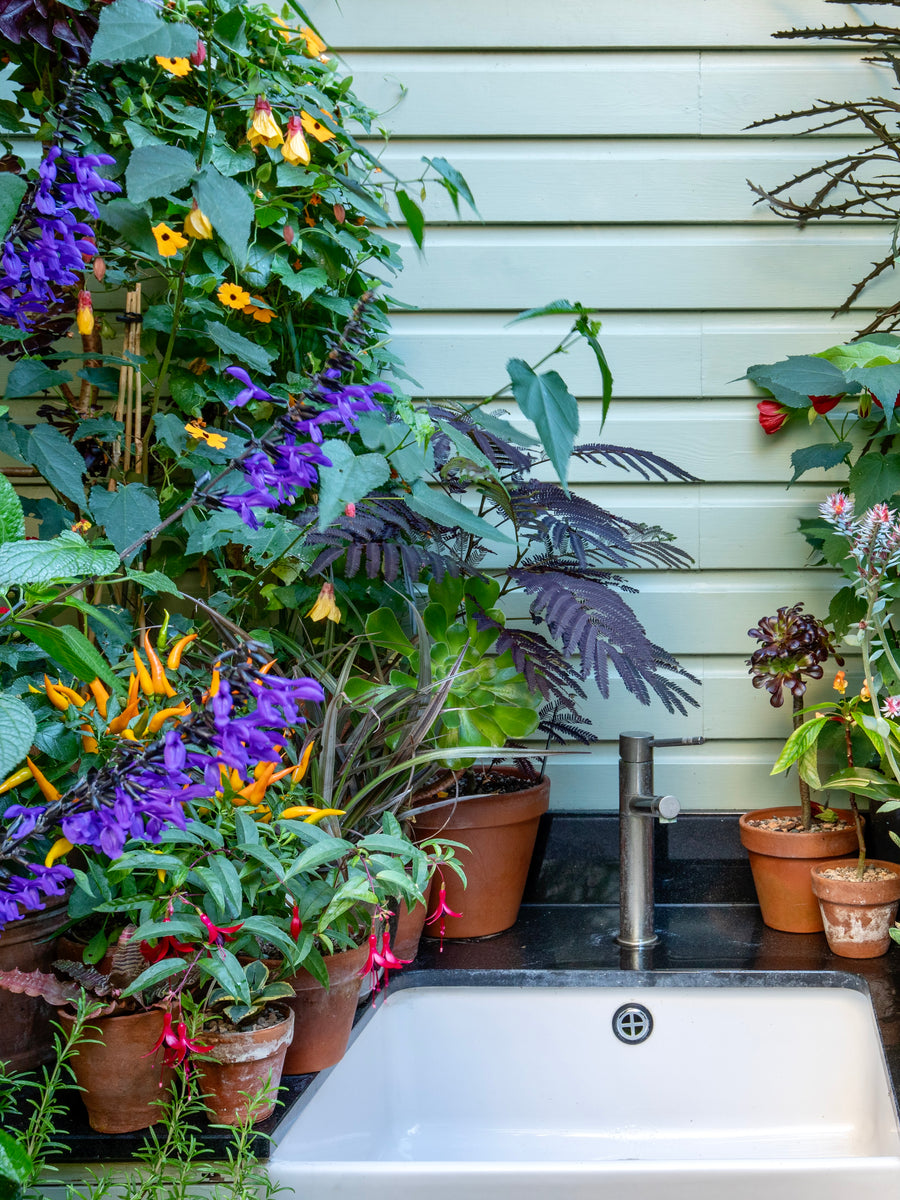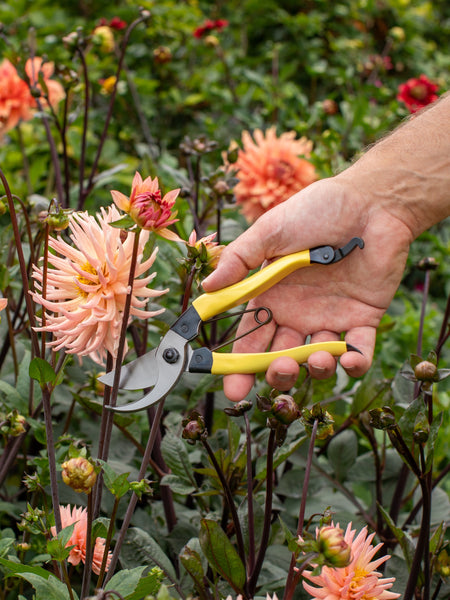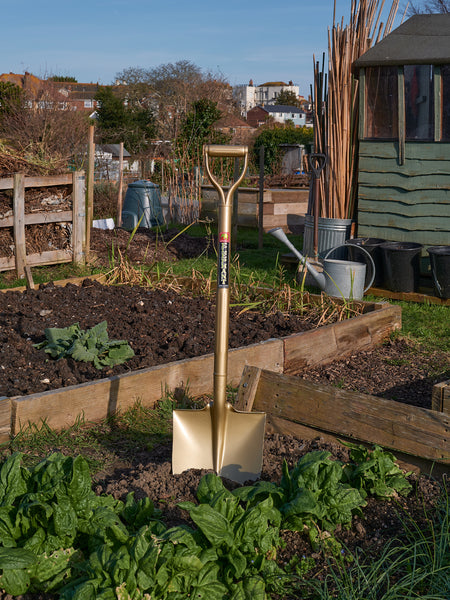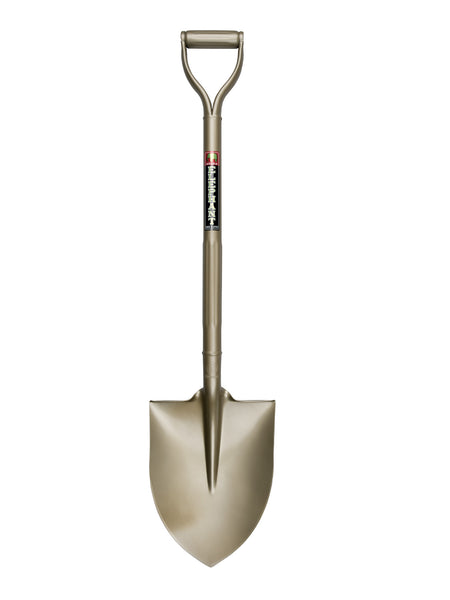Climate change has opened up all sorts of exciting possibilities for garden lovers, broadening the range of plants that can be grown outside in the U.K. and boosting the popularity of ‘exotic’ or ‘jungle style’ planting. Fuelled by an eagerness to try something new and push the boundaries, gardeners have embraced plants considered only suitable for conservatories 100 years ago.
Living by the coast, where temperatures rarely drop below freezing, I have been growing tender plants for many years, filling my garden with tropical foliage and other-worldly flowers. In this short guide, I’ll explain how to care for tender plants when the mercury falls.
What does tender mean?
A tender plant is one that will not survive the winter unprotected because it’s sensitive to frost. Some will cope with cold, but not when combined with wet - for example, agaves (below) - and others dislike cold winds. Tender plants generally won’t survive the winter without some form of human intervention.
Conversely, plants unaffected by frost are deemed ‘hardy’ and require no special protection. If you come across the term ‘half hardy’, often applied to annual bedding plants, that means the same as tender - they’re hardy in summer, but frost will kill them.

Snow won't harm agaves, but the melting water that follows might freeze and damage the leaves and roots.
Why are plants sensitive to frost?
Many plants we grow in our gardens are not native to the UK, and some are from places with warmer climates, such as Mexico, India, South Africa and the Canary Islands. Planting them in our gardens is asking them to acclimatise to different conditions from those they’ve evolved in - some can do that better than others. Plant breeders spend a great deal of time and money developing tougher and more adaptable varieties to suit our climate.
Ice crystals form in the plant’s tissue when we get frost: these can be sharp enough to rip the cells apart - effectively bursting them. That is why plants such as dahlias appear blackened, limp and mushy like overcooked spinach the day after the first frosty night. Hardy plants either retreat underground in winter (herbaceous plants) or pack their leaves and stems with sugars, proteins, fats and minerals, which act like antifreeze and prevent the water inside from freezing. Because they haven’t adapted to cold conditions, tender plants may not have developed the ability to protect themselves in this way.

These plants have been well and truly frosted - limp, bleached, bronzed or crispy leaves are a sure sign.
Which plants are tender?
Camellias, dahlias, fuchsias, jasmine, passionflowers, pelargoniums, brugmansias, cannas, bananas, salvias, gingers and agapanthus are among countless plants we label as ‘tender’. How tender they are will depend on your location in the British Isles, the microclimate in your garden and what weather we experience - there are no hard and fast rules. A plant’s tenderness can be affected by a host of factors:
- Adaptability - some plants can tolerate a broader range of conditions than others - they are often the most common, successful and sometimes invasive ones.
- Age - older, more established plants tend to be less tender than younger ones, because their tissue is tougher and thicker, and their roots go deeper into the ground.
- Acclimatisation - a plant cossetted in a greenhouse or grown from seed or cuttings from a warmer region may be more tender than one cultivated locally and outside. Buying plants from nurseries in your local area that are propagated on-site may help.
- Environment - a Mediterranean plant like rosemary might survive winter perfectly well in a sheltered, sunny courtyard where the soil is light and gravelly. Still, it may perish only metres away where there’s a cold draft, shade and heavy, wet soil. Always seek conditions similar to those the plant grows in naturally.
- Weather - a sudden cold snap like the ‘Beast from the East’ may even kill plants that we consider hardy. The following year, it could be mild all season. The weather is unpredictable and can’t be controlled.
Gardening is not an exact science, and some variables will confound even the most expert gardeners. When buying a plant, check the description on the label, ask the grower, do some research online or ask the advice of a gardening friend before committing. Countless tender plants are lost yearly because the purchaser was unaware of their tenderness.

These house leeks (sempervivum) are perfectly hardy in this dry, sunny, well-ventilated position on a roof. Planted in soggy ground they might perish.
Should I protect my tender plants?
Yes, if you want them to come back the next year! If you’re not too fussed, you can leave them to fend for themselves. Otherwise, don’t leave it to chance. My advice is not to get too attached to tender plants: accept that you’re gardening on the edge of their tolerance.
How should I protect my plants?
You have two options: protect plants in situ or move them somewhere more sheltered. The decision will often come down to size and effort required. Digging up a tree and hauling it inside isn’t something many of us would volunteer for.
Your main objective is to keep tender plants warmer than freezing. Herbaceous plants such as salvias, dahlias, cannas and gingers can be cut down in autumn and thickly mulched in southern regions. The mulch acts like a blanket, trapping soil warmth beneath it and insulating it from the cold. In northern areas, it will probably be necessary to dig these plants up, pot them in old potting compost and keep them in a frost-free shed, garage, cellar or greenhouse until they resprout in spring. Because they die down naturally in winter, they do not require light.

These asparagus beds have been well mulched to keep the plants beneath warm.
Tender plants that don’t die down in winter need to continue growing, or at least ticking over, until spring. Fuchsias, coleus, impatiens and pelargoniums (geraniums) can be tidied up and brought inside as houseplants, although they may struggle to adapt to the warm, dry conditions indoors. The best place for them is a frost-free greenhouse or an unheated room on a bright windowsill.
You may have seen bananas, pencil pines, palms, bay and olive trees elaborately wrapped in straw, hessian (burlap) or fleece to protect them over winter. In my opinion, this doesn’t work and may cause more harm than good by trapping moisture and pests close to the plant. Once the cold has penetrated the wrapping, which it will, there’s nothing to re-warm the plant inside. At best, these methods reduce wind damage and prevent snow and ice from breaking branches and scorching foliage; they will not keep a plant warm.

In gardens where there's plenty of labour, bananas are protected in situ using straw. Is it effective? Opinions differ!
When to take action
Quite simply, do it before the first frost of the year. One common exception is dahlias, where gardeners tend to wait until immediately after the first frost before clearing the damaged foliage and lifting or mulching the tubers. This is more of a tradition than a necessity. If you’ve left protection too late but the plant seems untroubled, count your blessings and make it the next job on your list.
Insurance measures
It might not be possible to protect every tender plant in your garden. Sheltering them is labour intensive, and there’s only so much space in our homes and outbuildings. Gather seeds from plants such as gingers and cannas to keep as an insurance policy should the original plant perish. In autumn, take cuttings from plants like pelargoniums, plectranthus, coleus, begonias and fuchsias and discard the parent plant. The cuttings will grow happily on a bright windowsill over winter; next year they’ll rapidly achieve a handsome size. Don’t forget to offer spare plants to friends and neighbours too.

Cuttings of scented-leaved pelargoniums overwintering in a greenhouse. They take up much less space than the parent plants.
If this sounds like hard work, seek out hardy plants; your garden will be no less beautiful. However, we’ve always been a nation of plant kleptomaniacs, gathering species from all over the world to grow in our gardens. That’s unlikely to stop, despite a renewed interest in native plants. Tender plants offer variety, beauty and drama, and they have just as much value to wildlife in many cases. Provided you use tender plants within the limitations of your energy and pocket, your garden will be richer for their presence.






